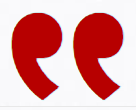The pendemic left us with crippling distances from each other. It’s easy to forget how much we give up when we send words in place of ourselves. The concurrent inability to make eye contact starves communication of its hold on us. Even in the best of circumstances, the meta-gaze of a Zoom call is never going to be the same as the direct eye contact in real space.

A recent New York Times report describes managers at “fast casual” restaurants insisting that staffers greet new customers with a reassuring and direct “welcome.” Apparently businesses found too many first-time customers leaving if no one in the business acknowledged them in the first minute. It’s a specific application of the more general principle of a direct gaze as the near-certain requirement of interpersonal engagement. Child development specialists remind us that an infant’s search for its parent’s eyes is not only a joy, but an early sign of a child’s readiness to become a social being. It’s nature’s way of cementing the bond that assures that the many needs of a relatively helpless newborn will be met.

The expectation of eye contact with another is a floating but existing norm across most cultures. Even experts offering advice for choosing a new pet from the pound note that a good bet is usually an animal that gazes on our face. And it’s clearly true that our pets are veterans at the game of shamelessly using soulful looks to get us to provide some useful service.
It seems that the poets were right. We look into the eyes of others as if they were “windows of the soul.”
Try a simple experiment to test the essential nature of direct eye contact. Talk to a friend or relative face to face, but look at one of their ears rather than their eyes. The poor victim will often move to try to adjust to your off-kilter stare. They want to be at the center glidepath of your eyes to find signals of your engagement. Looking away suggests you want to break off the exchange. It seems that the poets were right. We look into the eyes of others as if they were “windows of the soul.”

Of course what is going on is more than reciprocal staring. We have an entire lexicon of signals that are modulated through the eyes and the facial muscles that surround them. Ask an actor to perform the emotions of surprise, concern, fear, or joy. Most of the work of suggesting these inner states is going to happen within the pupils of the eye and the muscles of the eye-lids and the brows immediately above them. Often these are the only tools a film or television actor has, since they are usually shot in tight closeups. Witness the last half hour of Damien Chazelle’s much-praised La La Land (2016). The final scenes of the former couple are predicated on our noticing eyes that lock as if their owners believed they still had a shared future.
What is obvious here still needs to be said, especially after we begin to abandon the enforced isolation that came with the pendemic. We may need to retrain ourselves to use rewarding face to face exchanges. The more we continue to hold on to mediated forms of personal communication—texting, phoning, e-mail and their equivalents—the less we will exercise what should still be a natural inclination.
Most Americans who are around children have given a collective sigh of relief to see youngsters return to the classroom. Masked, they may be. But their eyes can still connect, with all the positive recognition of another they can give. Back in school, we know they have regained their birthright to build connections and create meaning–all without going through the confining hardware of digital screens.
![]()



